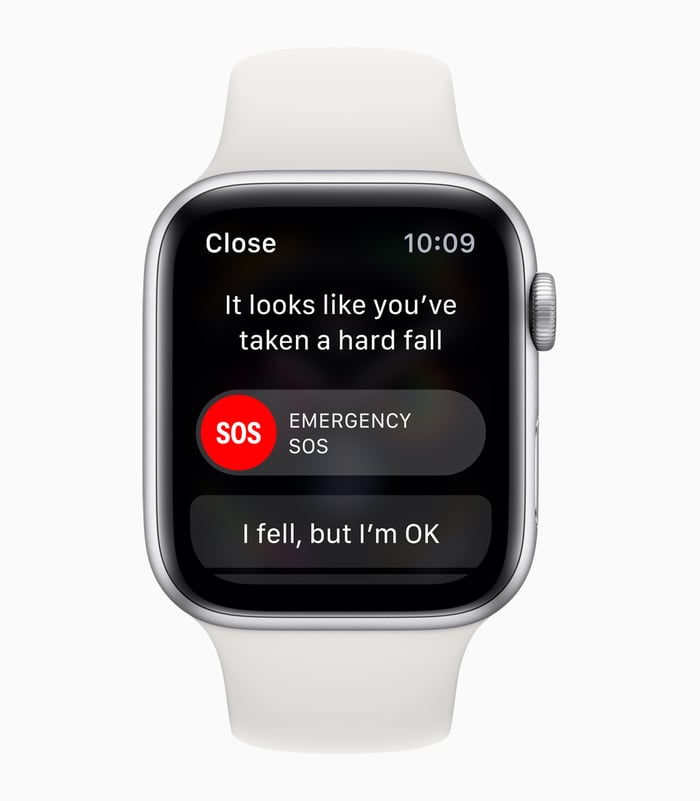Apple (AAPL -0.96%) had its latest product unveiling this week, and one of the highlights was the release of the Apple Watch Series 4. The iPhone maker revealed what it called "a complete fundamental redesign and reengineering" of the popular device -- which Apple CEO Tim Cook said is not only the No. 1 smartwatch, but "the No. 1 watch, period."
There were lots of things to like about the latest edition of the device. This includes a display that is more than 30% larger, while sporting a smaller, thinner case. The speaker was also improved and is now 50% louder than the previous model. The Watch contains a faster dual-core processor, and the digital crown offers haptic feedback through a series of incremental clicks.
But some of the most groundbreaking features could save your life.

Image source: Apple.
At the heart of the matter
The Apple Watch Series 3, introduced this time last year, had an updated heart rate monitor that powered a wide range of health and fitness features including the heart rate app, which could take measurements while at rest, during a workout, and in recovery.
The capabilities provided much greater insight into heart measurements, as I wrote at the time, and would even notify the wearer if it detected a spike in the heart rate when not exercising -- a sign of a potentially serious heart condition -- but Apple's latest timepiece has taken its heart monitoring capabilities to a whole new level.
FDA approved
Apple Watch Series 4 has electrodes built into the digital crown and a new electrical heart rate sensor in the back crystal that can take an electrocardiogram (ECG) using the new ECG app (which will be available later this year). The wearer can touch the digital crown and receive a heart rhythm classification within 30 seconds, which will alert the user as to whether the heart is beating normally or if it detects Atrial Fibrillation (AFib), potentially life-threatening spikes in the wearer's heart rate. The ECG results can be stored on the device in a PDF file on the Watch that can then be shared with a physician.
The device received a first-of-its-kind approval from the U.S. Food and Drug Administration (FDA) for the ECG features, granting it "De Novo" classification. Dr. Ivor Benjamin, M.D., the president of the American Heart Association, appeared at the unveiling event, calling the device "game-changing."
I've fallen, and I can't get up
One of the more surprising new features on the Watch is the ability to detect falls. Apple added a next-generation accelerometer and gyroscope as well as custom algorithms that can detect when a person has slipped, tripped, or fallen.
The device analyzes wrist trajectory and impact acceleration and then sends the user an alert. If that alert isn't dismissed or the Watch senses the wearer has not moved for 60 seconds after the fall, it automatically contacts emergency services, as well as notifying the user's emergency contact.

Image source: Apple.
Increasing interest in heart health
The improved health-related capabilities of the latest Apple Watch are part of a broader move by the Cupertino company into healthcare. Apple was recently looking to hire engineers for its Health Sensing Hardware segment to process the data collected by its various health and fitness related sensors.
The capabilities of the Apple Watch Series 4 are a ground-breaking next step.





